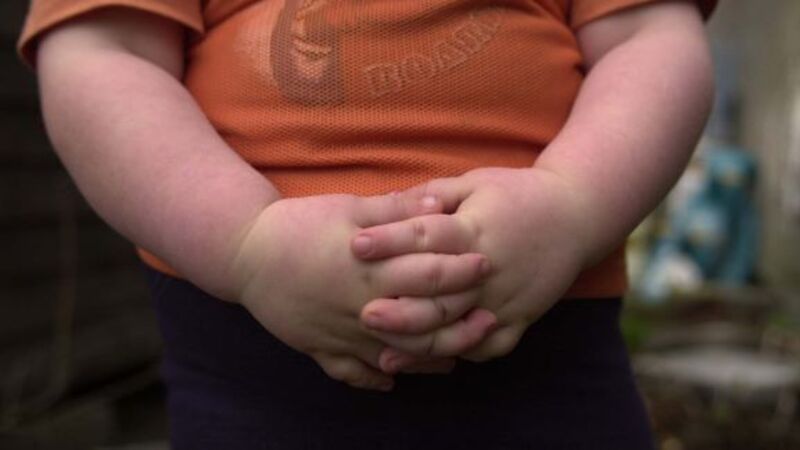Not allowing kids to run in the playground! Pure madness and child obesity is why

Action, movement and play all accumulate to make up the ‘culture of childhood’ as advocated by the psychologist Jerome Bruner in 1983.
However, over the last number of decades studies have shown that children, who have always been deemed the most active of the populace, spend an ever increasing amount of time involved in sedentary pursuits such as watching television and playing computer games. This has caused the fitness rates in children to decline.
Obesity is the end result of an inversely proportional relationship between activity level and caloric intake. Children who take in more calories than they burn become obese and less physically active. Consequently, childhood obesity has emerged as one of the most serious public health challenges of the 21st century.
The World Health Organisation in 2012 stated that over forty million children globally are now overweight or obese.
Research has shown that Irish primary school children are failing to meet physical activity guidelines, with girls being less active than boys.
In the recent Growing up in Ireland National Longitudinal Study of Children (2011), 61% of 9-year old children reported that their physical activity levels did not meet the guideline of one or more hour(s) of at least moderate intensity activity on five or more days a week.
Studies have shown that physical activity and elevated fitness levels help to diminish the risk of coronary heart disease, blood pressure, stroke, diabetes, osteoporosis, some cancers and depression.
Schools have been acknowledged by international and national policy as being a key setting for the promotion of physical activity and healthy living in children. Children generally have two outlets for physical activity in school: PE and break-time.
PE alone has been shown to be inadequate in meeting physical activity recommendations needed for health benefits. Irish primary school children are allocated just over half of the European Union average of 109 minutes of PE classes per week.
In 2010, the NCCA reported that Irish primary teachers identified there being insufficient time to adequately cover all eleven curricular subjects due to an overloaded curriculum. 52% of total teaching time in primary schools is awarded to English, Irish and Mathematics. This leaves eight subjects, including PE, competing for 48% of the remaining instructional time.
As a result, the European Union Education Information Network in 2013 found that Irish primary schools offered less hours of PE than any other EU member state, where 45 hours of PE per annum is the minimum.
Therefore break-time is seen as a fundamental element in the promotion of school-based physical activity and fitness as the Primary School Curriculum advocates thirty minutes of recreation and a further break of ten minutes daily. Break-time can play a role in children’s social, emotional and cognitive development and studies show that breaks where children can partake in physical activity led to an improvement in children’s alertness, attentiveness and improved classroom behaviour.
Irish school playgrounds have been described in research as ‘flat and uninspiring pieces of tarmac’, with equipment scarce and basic. Schools should strive for playgrounds to be aesthetically pleasing with quality landscapes where both formal and informal learning can take place.
Risk evaluation is crucial in school play areas and should be monitored regularly. However recent research has revealed that a very over-exaggerated focus on safety issues in children’s play environments (e.g. a “no running” policy) is problematic as it can lead to children being restricted from practices and experiences that are influential to their general development.
The break-time environment should encourage children to be physically active. Active break-time involves purposefully designing the playground with activities to encourage physical activity. Positive benefits have been shown in research by adapting playgrounds and installing fixed playground equipment, games equipment and playground markings to encourage more physical activity in children at school.
A recent study I completed, found that the presence of fixed playground equipment at school had a significant positive effect on the fitness levels of children over the school year. Yet low cost initiatives are also proven to be very effective in contributing to children´s activity levels, as shown in an array of studies from the UK, US, Australia and New Zealand.
Most Irish Primary Schools have an abundance of readily available and low-cost equipment such as balls, skipping ropes, hool-a-hoops, etc. that can be utilized during break-time. Simple initiatives that incorporate this kind of equipment as well as simple jogging/cardio drills in several activity stations can be easily implemented with great results.
Permanent play equipment and facilities in school playgrounds are associated with an elevated level of both physical activity and fitness in children. With only 25% of Irish children meeting the recommendation of sixty minutes of moderate to vigorous physical activity per day, promotion of physical activity and fitness and investment in these areas in schools are urgently required.
Break-time, with an allotted 40 minutes per school day, is a key period to target. Easily implemented initiatives, utilising PE equipment during break-time, can be very effective in increasing children´s activity levels. Additionally, creating an optimal environment for break-time - one that is safe, well-supervised by staff and provides well-maintained recreational equipment - has potential to also reduce injuries and improve behaviour among children in school.
The only question remains: Can we afford not to take action to promote more activity during break-time?










